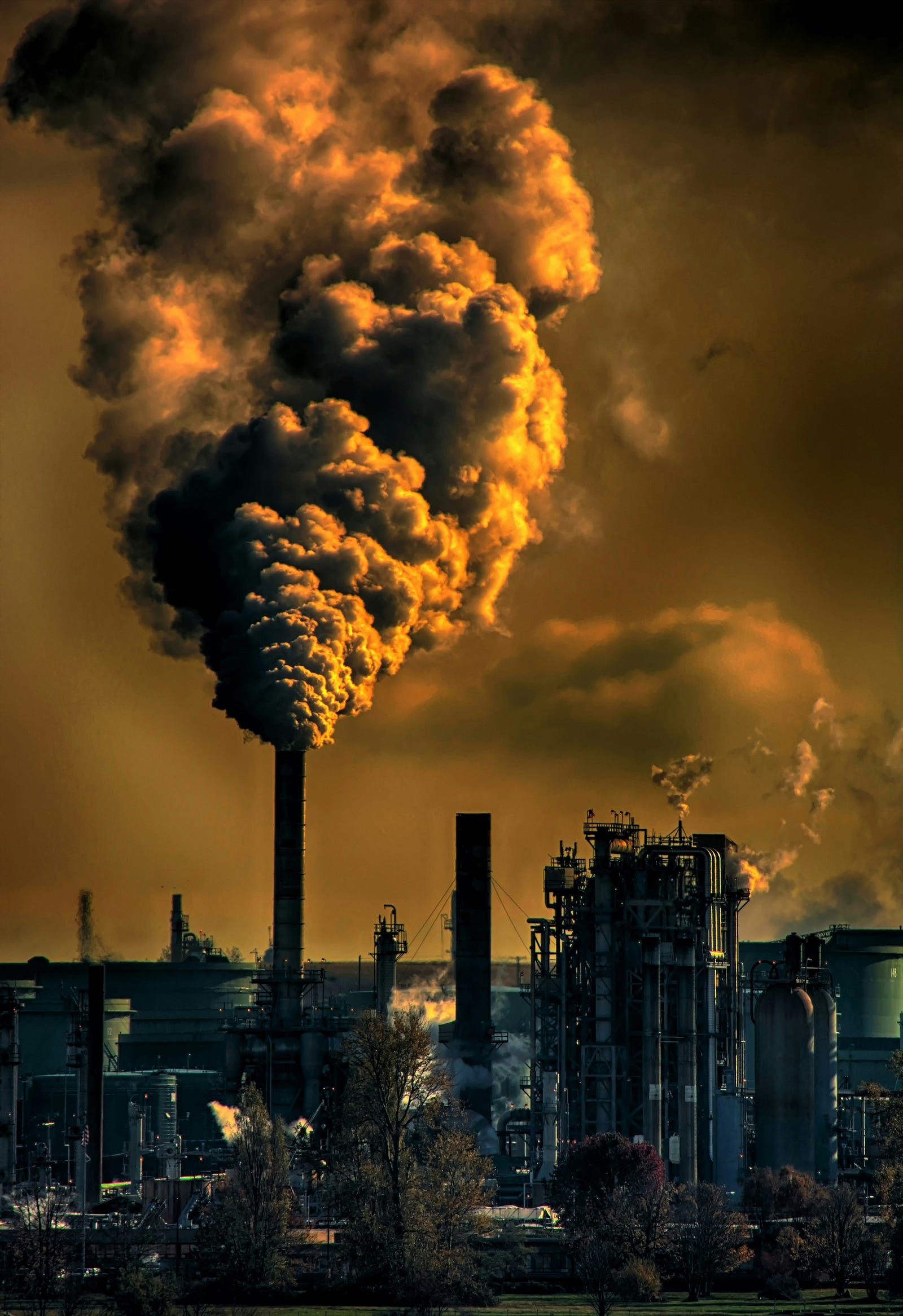Asking these five questions takes us beyond the obvious symptoms to discover the root cause of climate change.
As you walk into the Shard in London (Europe’s tallest building), there is a majestic tree that stretches towards the ceiling. The tree sits in a giant pot isolated from any other tree, and yet the tree knows, implicitly, that it can no longer grow. The tree understands that its existence depends on following the unwritten rules of nature.
Imagine the tree kept on growing simply because it quite liked the idea of being bigger. If it did, the tree’s roots would eventually break through the pot which supports it. The tree would need more nutrients than the soil could provide. In its quest to get bigger, the tree would ultimately die because its limited environment — the pot, filled with a limited supply of soil, and the ceiling of the reception— can only sustain a tree of a certain size.
In nature, the same rules apply. Once a tree reaches maturity it remains in a steady state. This is one where it no longer grows, but maintains a state of dynamic equilibrium. The tree changes with the seasons, sure, but it never exceeds the capacity of the environment that sustains it.
That’s ultimately what sustainability is about. Interacting with the environment in such a way that you achieve balance. Balance can only be achieved by conforming to the rules governing nature. Break the rules and you’re guaranteed to suffer the consequences.
With industrialisation, that’s exactly what we’ve done. In our pursuit of social progress, we have created an imbalance which means we interact with the environment in ways that can’t be sustained.
Climate change has become the symbol of that fact.
In our efforts to create sustainable societies — which, by and large, revolve around decarbonising and achieving net zero — what’s often dismissed is the root causes of what makes our society and economy unsustainable.
That may sound like a contradiction. Surely if climate change is the issue, then decoupling emissions from economic activity is the solution to our problems. But climate change is a symptom of a problem, not a root cause. Without questioning the cause, it’s safe to assume the effect will continue.
The five whys is useful in demonstrating the point.
The five whys is the practice of asking ‘why’ five times when faced with a problem, to get beyond the obvious symptoms and discover the root cause. Seeing as it has become synonymous with the problem, let’s begin the exercise with a question about climate change.
1. Why is the climate changing?
Put very simply, climate change is caused by greenhouse gases emitted through human activity.
This begs another question.
2. Why are we producing greenhouse gas emissions?
Production in industrial and post-industrial societies has become dependent on fossil fuels. In extracting the energy locked away in fossil fuels we also unlock greenhouse gas emissions.
So emissions are an undesired outcome of the production of goods and services.
Again, we’re no way nearer to a cause. So…
3. Why have we become reliant on fossil fuels to produce goods and services?
Fossil fuels are energy-dense. They are quite brilliant at providing the inputs of energy that fuel modern society.

Ever since the Industrial Revolution, the increased sophistication of technology and machinery means we have become more and more efficient at extracting the energy from fossil fuels. This ability has seen an explosion in production, which has, in turn, created an avalanche of consumable goods and services.
The explanation is crying out for another question.
4. Why is increasing production a good thing?
Increasing production allows private companies (which, in a capitalist economy, own production) to increase revenue. Increasing revenue enables them to increase profits — which is the raison d’etre of all companies.
Increasing revenue has positive social outcomes. It allows companies to pay the labour force higher wages. Increasing incomes is good for everyone as the more money people have in their pocket, the more they can spend on consumer goods, which leads to increasing revenues, which leads to increasing incomes — and so on.
Increasing incomes is important because, for one, it’s no good if companies produce more stuff if consumers can’t buy more stuff. Most importantly, though, is an assumption that lies at the heart of the economy. Human well-being is wrapped up in maximising utility. So the greater capacity we have to buy more goods and services, the happier we are.
That explains why, on an individual level, capital accumulation (becoming richer), has become the social goal driving all social and economic activity.
When looking at the economy as a whole, the desired outcome of all of this activity is to stimulate economic growth. It’s economic growth that has become the most important driver of economic and social success.
We’re left with a question that is a gateway to our root cause.
5. Why is economic growth vital to the health of society?
Economic growth is the core belief of modern society.
As the sociologist Daniel Bell argues in The Cultural Contradictions of Capitalism, growth is “the source of individual motivation, the basis of political solidarity, the ground for the mobilisation of society for a common purpose.”
The importance of growth in the economy becomes clearer when we look at the consequences of whether the economy has grown, or not. Gross Domestic Product (GDP) is the yardstick designed for that purpose.
The success or failure of governments often hinges on the performance of GDP because it’s directly linked to employment, interest rates, health care, education and infrastructure development.
Increasing GDP means increasing output — the economy has grown. This often means more companies in business. More companies mean more jobs. More jobs mean more money in people’s pockets. More money in people’s pockets means happier voters.
Decreasing GDP means decreasing output — the economy has shrunk. Decreasing GDP can lead to recession. Recession often means bankruptcies and fewer businesses. Fewer businesses mean more redundancies and fewer jobs. Fewer jobs mean less money in people’s pockets. Recessions tend to be accompanied by inflation and higher interest rates, driving the cost of living up. All in all a recipe for social discontent and unhappy voters.
In short, economic growth must be sustained to maintain functioning societies.
Now when it comes to the root cause, it’s still not entirely clear why economic growth is unsustainable. This ties back to that majestic tree sitting in the Shard.
The cause of undesired outcomes
As alluded to by the exercise, achieving economic growth requires increasing production. To do that, you need to make more consumable goods. What this means is that, year on year, we require more throughputs of energy and resources to be fed into the economy. It means more mining, more trees being cut down, more energy inputs (the majority of which still come from fossil fuels).
Economic growth feels rather abstract. You can’t see the economy growing. But maintaining an economy of this size has consequences. For starters, our requirements on the natural world have become enormous. So enormous that we would need 1.7 Earths to make our consumption levels sustainable.
It may be on a planetary scale, but our behaviour is no different to the tree determined to keep growing. We have broken out of the pot and require more energy and resource inputs then our pot (literally the entire Earth) is able to provide us.
Exceeding the capacity of the environment is known as ecological overshoot. Overshoot is why the current state of affairs is unsustainable. And economic growth is the cause.
Overshoot never ends well. What it translates into in the world around us is a changing environment. Overshoot has led to climate change. Overshoot has led to habitat destruction and the extinction of countless species. Overshoot is why the Arctic could become ice-free in the next ten years. It’s why the Amazon Rainforest is on the verge of collapse and could transform into a savannah.

These are the alarm bells. This is how the Earth is communicating that it can’t sustain the pressure points that we’re placing on it.
What makes the pursuit of growth even more questionable is that even if we did decouple growth from any environmental impacts (a demonstrably impossible objective), the goal would still be unsustainable due to the fact the world around us is finite.
The Limits to Growth, published in 1972, made headlines as it dared to question the impossibility of growth on a finite planet.
The books seismic conclusion was growth on a finite planet can’t be sustained due to the thermodynamic laws that govern energy. The book predicted civilisation would collapse sometime in the 21st century as we start to come up against resource limits. The natural resources we depend on as throughputs into (and out of) the economy being what will eventually pull the brakes on growth.
We don’t have a choice
The sustainability of never-ending growth must be questioned. But it’s the thing that never does get questioned. This ties back to the five whys. Economic growth is the foundational goal of the global economy. Should countries fail to achieve growth the economy would eventually collapse. It’s kind of a big deal then.
The five ways of sustainability expose a brutal reality. We don’t have a choice whether we give up economic growth. Yet, because we have all been born into an economic system where growth is the bedrock of what an economy does, the idea it could be anything else is incomprehensible.
What then are the solutions to the challenges we face? There is simply no getting around it. If we want to sustain civilisation we must give up growth. This would require, by a long way, the most radical shift in human history.
Seeing as economic growth remains unquestionable, we appear as far away as ever from triggering such a transformation. We are not going to be proactive (humans rarely are) and voluntarily transform the way we do things, because it would require people to make profound sacrifices. And it’s not just the rich and powerful that have everything to lose. Everyone, in one way or another, has something to lose should such a transformation be triggered.
What’s now required to enable such a transformation is a trigger point. And it just so happens that all we need for such a trigger point is to remain on our current path, because lying up ahead is a brick wall.
How that brick wall expresses itself is the unknown. But we know we’re hurtling towards profound ecological changes that will create untold chaos and unrest. We also know it is only a matter of time before we start to come up against resource limits.
One way or another, we are on a crash course to economic and social collapse. As gloomy as that sounds, collapse is the exact trigger point that’s needed to create conditions where a shift away from a growth economy becomes possible. The spectre of collapse presents an opportunity. An opportunity to move back within the limits of the pot that sustains us, so that one day, just like the majestic tree, we’ll be able to live in perpetual balance with nature. That’s what sustainability is all about.



